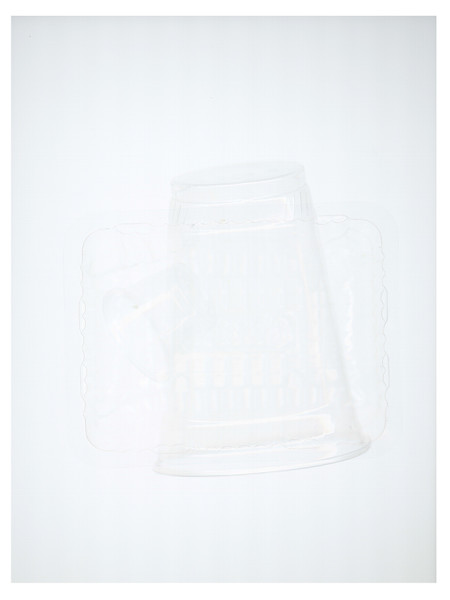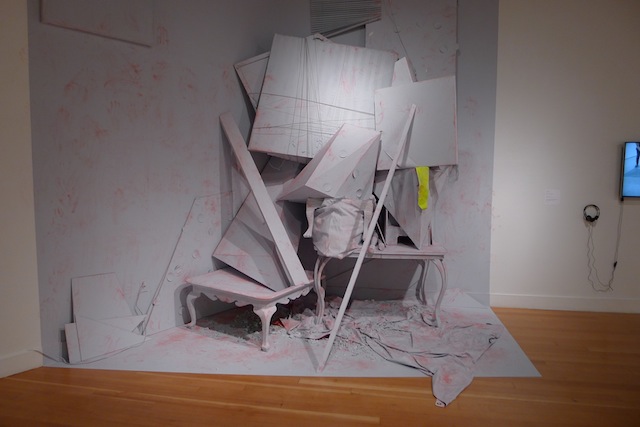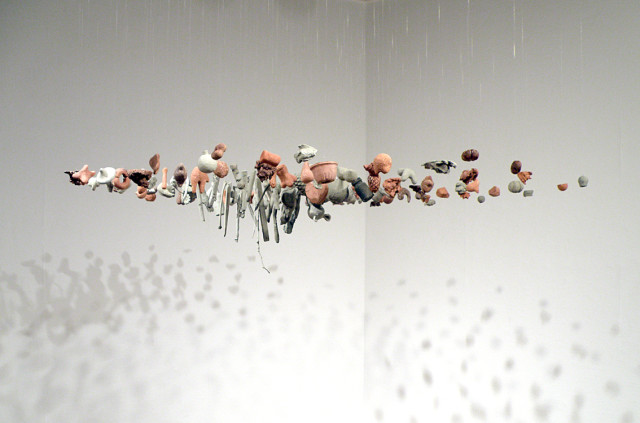At the Berkeley Art Center, the six graduating artists of UC Berkeley’s MFA program showcase the culmination of two years of artistic development and experimentation. Investigating studio habits, nearby mudflats and the Bay Area at large, their very different practices combine into a collective artistic accomplishment.
Lee Lavy presents a video performance simulating the subterranean effects of an earthquake in his own studio, resulting in a mass of soil and broken concrete. Leslie Dreyer’s work documents her activist interventions addressing the local foreclosure epidemic. Matt Smith Chavez, who refers to himself as an “imagemaker,” blends painting, photography and printmaking in an approach shifting between diagrams, abstraction and advertising.

Photographer Michelle Ott proves even seasoned artists experience dramatic growth during graduate school. In Antarctica With/Without, a series she began in 1999, she photographs scenes around research stations in Antarctica, often cutting the prints to remove signs of people. Ott’s work in the MFA show takes her pre-existing interests into unexpected terrain.
From a distance, the photographs in her Redirected Objects series look empty, but slight variations in color reveal abstract forms and meticulous hand-cut patterns in the prints. The images are scans of everyday objects (a plastic cup) made nearly invisible by shining light above the scanner while capturing the image. As in her previous work, these photographs expose human culture through negation and obfuscation.
Of studying at a research university, Ott says, “Taking classes in other departments (in my case, in Geography and New Media Studies) allowed me to identify new contexts within which to place what I do in the studio.”

“I wanted to leave the range of comfort I had set up for myself,” she says, “and give attention to lines of thinking I hadn’t been following through on.”
Sofie Ramos’ work involves what she calls “sculptural painting installations.” She transforms spaces with complex arrangements of stacked materials and documents these metamorphoses via stop motion video. Her installations resemble Kurt Schwitters’ Merzbau or a set from The Cabinet of Dr. Caligari, awash in a cartoonish palette.

Tanja Geis, another standout in the exhibition, made Littoral Daemon III (2015) with pigments sourced from the mud of San Francisco Bay. The drawing’s mirrored image looks organic, but the form comes from trash found in the mudflats near the Berkeley art studios. Actual objects from the Bay, cast ceramics and trash covered in clay form a hanging installation that throws captivating shadows on the gallery wall. A third piece, Sublittoral Watch (2015) is a dark and ethereal underwater video that confuses the laws of physics by flipping the viewer’s perspective.
Geis is eager to keep working with underwater video. And though graduation means the loss of her current studio, she will continue this project as a recipient of a one-year fellowship at the Headlands Center for the Arts. Geis and her Berkeley colleagues must now navigate the murky waters of the real world, where jobs, studios and, increasingly, homes are difficult to secure. But if this exhibition is any indication, they are well on their way.